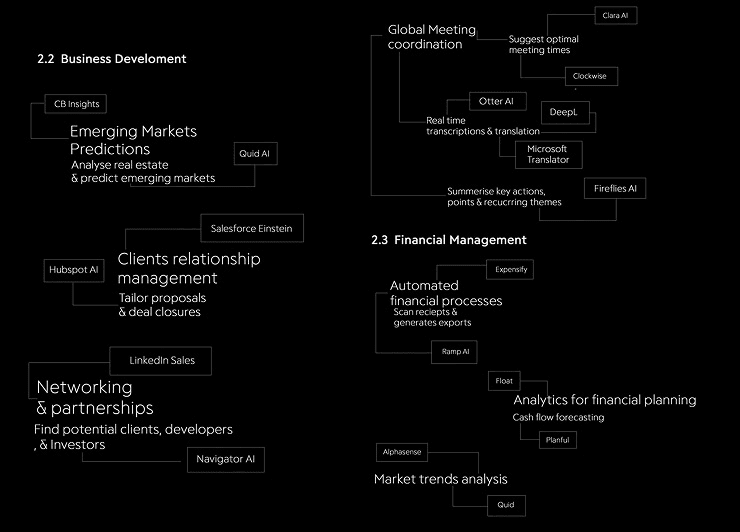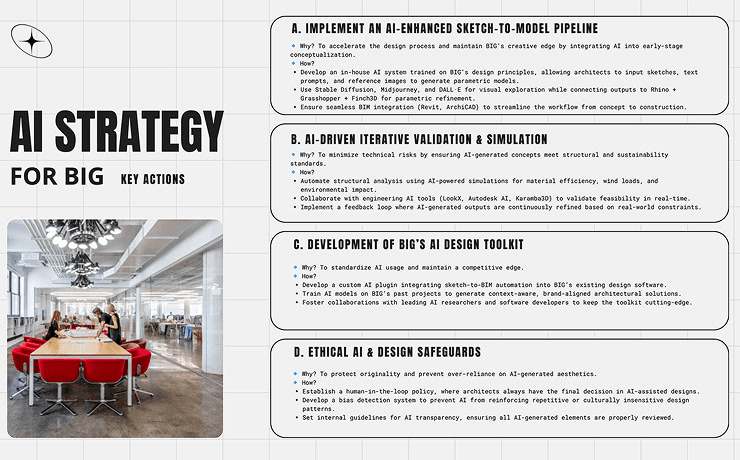IE University and Bjarke Ingels Group Recognize Innovative Ideas on AI for Architecture

The AI-focused High Potential Award recipients will enroll in IE School of Architecture and Design's Master in Business for Architecture and Design.
The integration of artificial intelligence (AI) in architecture presents new opportunities and challenges for the industry. Acknowledging this transformation, the IE School of Architecture and Design, in collaboration with the globally recognized Danish firm Bjarke Ingels Group (BIG), launched a High Potential Award to support architects in exploring AI’s role in architectural design and business strategy. The competition tasked participants with assessing AI’s impact on BIG’s business model, identifying strategic opportunities, and addressing challenges related to AI implementation. The winners of this competition will enroll in the Master in Business for Architecture and Design (MBArch) program, beginning in March 2025.

AI is increasingly shaping architectural workflows, visualization techniques, and sustainability strategies. According to the Royal Institute of British Architects (RIBA) 2024 Artificial Intelligence Report, 41% of UK architects have integrated AI into at least some of their projects, with 43% reporting improved efficiency in the design process. Additionally, 57% anticipate using AI for environmental sustainability analysis within the next two years, while 49% consider AI-driven digital tools essential for managing the growing complexity of contemporary architecture
The High Potential Award powered by IE School of Architecture and Design in collaboration with BIG highlights the importance of integrating strategic, business, and innovation-oriented thinking into architectural and design practice, recognizing the ever-increasing impact of AI.
Kai-Uwe Bergmann, Partner at BIG and a jury member of the competition, stated: “We are currently evaluating over 30 AI tools at BIG, seeking those that will truly transform our work. The most compelling projects in this challenge demonstrated not only a command of these technologies but also an ability to assess their relevance to BIG’s specific processes.”

Jerónimo van Schendel, Academic Director of MBArch and jury member of the High Potential Award emphasized that architects often focus on AI’s visual applications but may overlook its operational benefits.“While young professionals tend to prioritize visuals, operational tools could be the most influential drivers of competitive advantage for large firms in the long run”, said van Schendel. “A key takeaway from the challenge was the importance of balancing visual AI tools, which receive widespread attention, with operational AI tools that can improve business processes, workflow efficiency, and design management”, added van Schendel
The jury recognized projects that demonstrated a comprehensive understanding of AI’s potential across different aspects of architectural practice.
First-prize winner Agunina Ziad was commended for a well-rounded approach to AI integration, incorporating both visual and operational AI tools within BIG’s workflow. "While the graphics were bold and expressive, the jury particularly appreciated the strategic perspective on AI adoption, making this project the most compelling for real-world implementation", noted the jury's citation.

Second-prize winners Lorenzo Sánchez Cala and Marilyn Villanueva focused on AI’s role in architectural visualization and sustainability, proposing strategies to enhance BIG’s creative processes. "While these projects excelled in their articulation of AI’s potential in design and representation", the jury noted that the "operational aspects of AI—such as workflow efficiency and business management—were somewhat secondary."